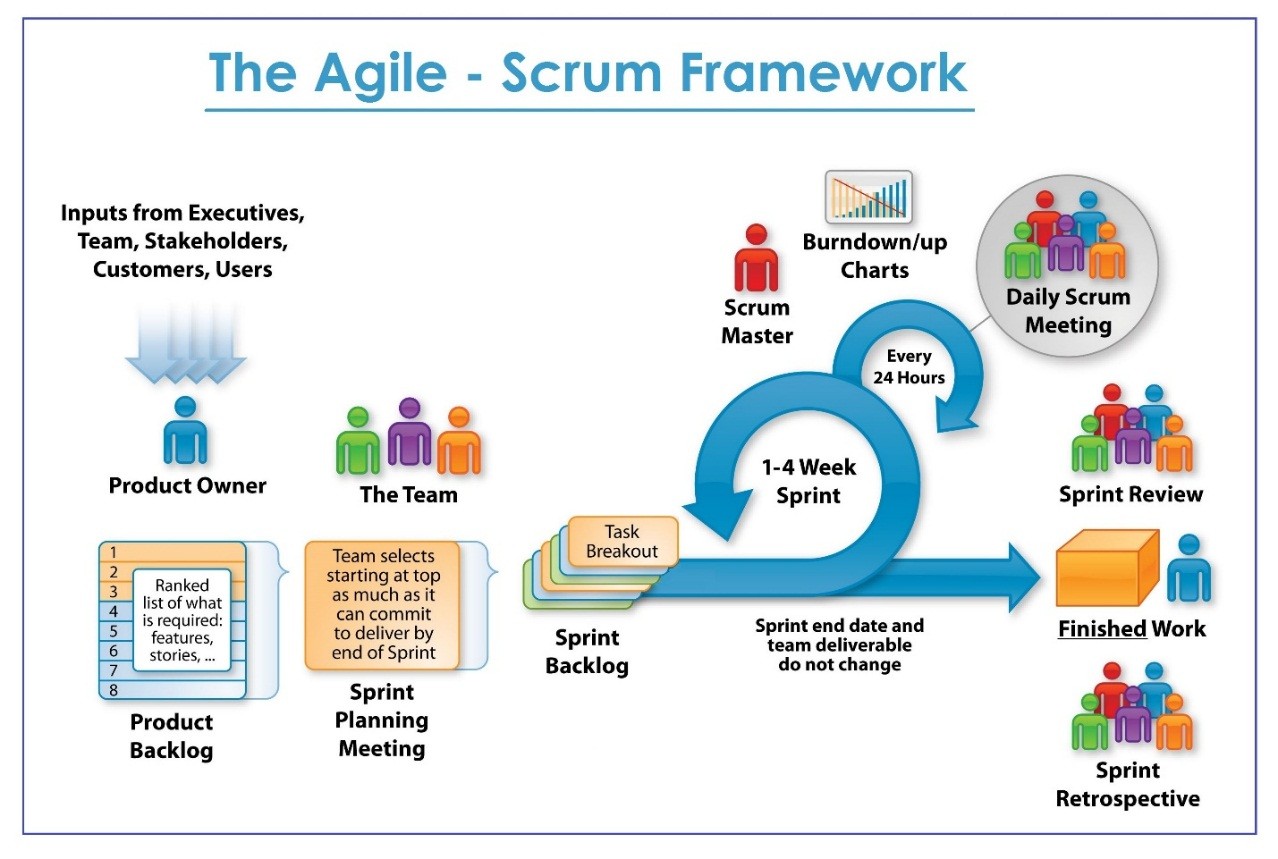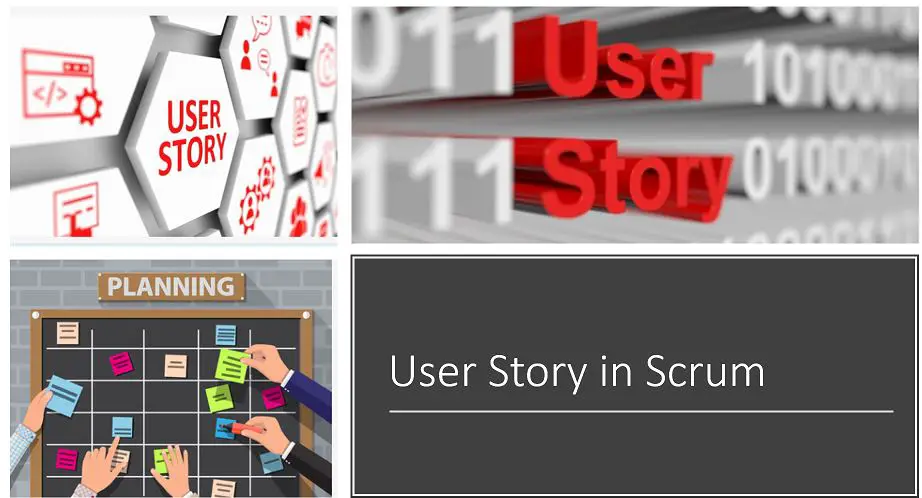Unleashing the Power of Scrum: A Comprehensive Guide to Scrum Stories
What are Scrum Stories?
Scrum stories are user-centric requirements that help Agile teams break down and prioritize work in a flexible and manageable way. By focusing on specific user needs and tasks, scrum stories promote effective communication and collaboration among team members. Their importance lies in enabling teams to deliver valuable, incremental improvements to a product or service in a timely and efficient manner.
The Role of Scrum Stories in Agile Project Management
Scrum stories fit into the broader context of Agile project management by serving as the building blocks for sprints and the product backlog. They are the primary means by which product owners communicate their vision and priorities to the development team. By breaking down larger requirements, such as epics and themes, into manageable scrum stories, teams can more easily plan and execute sprints, track progress, and adapt to changing requirements.
How to Write Scrum Stories: Best Practices and Techniques
To write effective scrum stories, follow these best practices and techniques:
- Use clear, concise language to ensure that stories are easily understood by all team members.
- Focus on user needs and tasks, rather than technical implementation details.
- Break down tasks into manageable chunks, typically taking no more than a few days to complete.
- Include acceptance criteria to define when a story is considered complete.
- Collaborate with team members to refine stories and ensure that they align with the overall project goals and user needs.
Examples of Scrum Stories: Real-World Applications
Consider the following examples of well-written scrum stories from real-world projects:
- As a user, I want to be able to reset my password so that I can regain access to my account if I forget my login credentials.
- As a customer, I want to view my order history so that I can track my past purchases and easily reorder items.
- As an administrator, I want to manage user permissions so that I can control who has access to specific features and data within the application.
Maximizing the Value of Scrum Stories: Tips and Tricks
To maximize the value of scrum stories, consider the following tips and tricks:
- Prioritize stories based on their value to the user and the overall project goals.
- Track progress using metrics such as story points, velocity, and burn-down charts to ensure that teams are delivering value efficiently.
- Continuously refine the product backlog by removing outdated or unnecessary stories and adding new ones as user needs and project requirements change.
Scrum Stories vs. User Stories: Key Differences and Similarities
Scrum stories and user stories are closely related concepts, with scrum stories being a specific type of user story used within the Scrum framework. The primary difference lies in their context and usage:
- Scrum stories are used within the Scrum framework, following specific processes and ceremonies such as sprint planning, daily stand-ups, and sprint reviews.
- User stories can be used in various Agile methodologies, not just Scrum, and may not adhere to the same strict processes and ceremonies.
Common Pitfalls to Avoid When Writing Scrum Stories
To ensure that scrum stories are clear, concise, and actionable, avoid the following common pitfalls:
- Writing stories that are too broad or too narrow in scope
- Focusing on technical implementation details rather than user needs
- Neglecting to include acceptance criteria or other important details
- Failing to collaborate with team members during the story refinement process
Scaling Scrum Stories: Best Practices for Large and Complex Projects
When working on large and complex projects, consider the following best practices for scaling scrum stories:
- Break down epics into smaller, manageable stories that can be distributed across multiple sprints and teams.
- Manage dependencies between stories and ensure that they are prioritized and addressed appropriately.
- Coordinate across teams using techniques such as Scrum of Scrums or Large-Scale Scrum (LeSS) to ensure that everyone is working towards the same goals and that dependencies are managed effectively.
Unleashing the Power of Scrum: A Comprehensive Guide to Scrum Stories
What are Scrum Stories?
Scrum stories are user-centric requirements that help Agile teams break down and prioritize work in a flexible and manageable way. Emphasize their importance in ensuring effective communication and collaboration among team members.
The Role of Scrum Stories in Agile Project Management
Scrum stories are a critical component of Agile project management, working in tandem with other Agile concepts such as sprints, user stories, and epics. Sprints are time-boxed iterations during which a team completes a set of scrum stories. User stories are similar to scrum stories, but they are not tied to the Scrum framework. Epics are larger, overarching requirements that are broken down into smaller, manageable scrum stories. By using scrum stories, Agile teams can ensure that they are delivering value to the end-user in a consistent and efficient manner.
How to Write Scrum Stories: Best Practices and Techniques
To write effective scrum stories, follow these best practices and techniques: use clear language, focus on user needs, and break down tasks into manageable chunks.
Examples of Scrum Stories: Real-World Applications
Share examples of well-written scrum stories from real-world projects. Highlight the key elements of each story and explain how they contribute to the overall success of the project.
Maximizing the Value of Scrum Stories: Tips and Tricks
Offer tips and tricks for getting the most out of scrum stories. Discuss the importance of prioritizing stories, tracking progress, and continuously refining the backlog.
Scrum Stories vs. User Stories: Key Differences and Similarities
Clarify the differences and similarities between scrum stories and user stories. Explain how they relate to each other and when to use each one.
Common Pitfalls to Avoid When Writing Scrum Stories
Identify common mistakes that teams make when writing scrum stories. Provide guidance on how to avoid these pitfalls and ensure that stories are clear, concise, and actionable.
Scaling Scrum Stories: Best Practices for Large and Complex Projects
Discuss how to scale scrum stories for large and complex projects. Offer best practices for breaking down epics, managing dependencies, and coordinating across teams.
Unleashing the Power of Scrum: A Comprehensive Guide to Scrum Stories
What are Scrum Stories?
Scrum stories are user-centric requirements that help Agile teams break down and prioritize work in a flexible and manageable way. They are an essential tool for ensuring effective communication and collaboration among team members.
The Role of Scrum Stories in Agile Project Management
Scrum stories are a key component of Agile project management, working in conjunction with other Agile concepts such as sprints, user stories, and epics. Sprints are time-boxed iterations during which a team completes a set of scrum stories. User stories are similar to scrum stories, but they are not tied to the Scrum framework. Epics are larger, overarching requirements that are broken down into smaller, manageable scrum stories. By using scrum stories, Agile teams can ensure that they are delivering value to the end-user in a consistent and efficient manner.
How to Write Scrum Stories: Best Practices and Techniques
Writing effective scrum stories is crucial for ensuring that Agile teams can work efficiently and deliver value to the end-user. Here is a step-by-step guide on how to write scrum stories:
- Use clear and concise language: Avoid using technical jargon or ambiguous language. Make sure that the story is easy to understand for all team members.
- Focus on user needs: Scrum stories should be written from the perspective of the end-user. Consider what the user needs and how the story will deliver value to them.
- Break down tasks into manageable chunks: Scrum stories should be small enough to be completed within one sprint. Break down larger tasks into smaller, manageable stories.
- Include acceptance criteria: Clearly define what constitutes a completed story. Include acceptance criteria that specify the conditions that must be met for the story to be considered done.
- Collaborate with team members: Involve the entire team in the process of writing scrum stories. Encourage open communication and feedback to ensure that the stories are clear, concise, and actionable.
Examples of Scrum Stories: Real-World Applications
To be added later in the article.
Maximizing the Value of Scrum Stories: Tips and Tricks
To be added later in the article.
Scrum Stories vs. User Stories: Key Differences and Similarities
To be added later in the article.
Common Pitfalls to Avoid When Writing Scrum Stories
To be added later in the article.
Scaling Scrum Stories: Best Practices for Large and Complex Projects
To be added later in the article.
Unleashing the Power of Scrum: A Comprehensive Guide to Scrum Stories
What are Scrum Stories?
Scrum stories are user-centric requirements that help Agile teams break down and prioritize work in a flexible and manageable way. They are an essential tool for ensuring effective communication and collaboration among team members.
The Role of Scrum Stories in Agile Project Management
Scrum stories fit into the broader context of Agile project management by providing a clear and concise way to define and prioritize work. They are related to other Agile concepts, such as sprints, user stories, and epics. Sprints are time-boxed iterations during which a team completes a set of scrum stories. User stories are similar to scrum stories, but they are not tied to the Scrum framework. Epics are larger, overarching requirements that are broken down into smaller, manageable scrum stories.
How to Write Scrum Stories: Best Practices and Techniques
Writing effective scrum stories is crucial for ensuring that Agile teams can work efficiently and deliver value to the end-user. Here is a step-by-step guide on how to write scrum stories:
- Use clear and concise language: Avoid using technical jargon or ambiguous language. Make sure that the story is easy to understand for all team members.
- Focus on user needs: Scrum stories should be written from the perspective of the end-user. Consider what the user needs and how the story will deliver value to them.
- Break down tasks into manageable chunks: Scrum stories should be small enough to be completed within one sprint. Break down larger tasks into smaller, manageable stories.
- Include acceptance criteria: Clearly define what constitutes a completed story. Include acceptance criteria that specify the conditions that must be met for the story to be considered done.
- Collaborate with team members: Involve the entire team in the process of writing scrum stories. Encourage open communication and feedback to ensure that the stories are clear, concise, and actionable.
Examples of Scrum Stories: Real-World Applications
Here are some examples of well-written scrum stories from real-world projects:
- “As a user, I want to be able to reset my password so that I can regain access to my account if I forget it.” This scrum story focuses on the user’s need to reset their password. It is clear, concise, and actionable. The acceptance criteria might include requirements such as the user being able to reset their password using a valid email address and receiving a confirmation email.
- “As a customer, I want to be able to view my order history so that I can track my past purchases.” This scrum story focuses on the customer’s need to view their order history. It is clear, concise, and actionable. The acceptance criteria might include requirements such as the customer being able to view their order history for the past year and seeing details such as the order date, order number, and items purchased.
- “As an administrator, I want to be able to manage user permissions so that I can control access to sensitive information.” This scrum story focuses on the administrator’s need to manage user permissions. It is clear, concise, and actionable. The acceptance criteria might include requirements such as the administrator being able to assign different permission levels to different users and seeing a clear indication of which users have which permissions.
Maximizing the Value of Scrum Stories: Tips and Tricks
To be added later in the article.
Scrum Stories vs. User Stories: Key Differences and Similarities
To be added later in the article.
Common Pitfalls to Avoid When Writing Scrum Stories
To be added later in the article.
Scaling Scrum Stories: Best Practices for Large and Complex Projects
To be added later in the article.
Maximizing the Value of Scrum Stories: Tips and Tricks
Scrum stories are an essential tool for Agile teams, enabling them to break down and prioritize work in a flexible and manageable way. To get the most out of scrum stories, it’s crucial to follow best practices and employ a few tips and tricks. Here are some ways to maximize the value of scrum stories in your Agile project management:
Prioritize Scrum Stories
Prioritizing scrum stories ensures that the team focuses on the most critical and valuable tasks first. By prioritizing stories, you can ensure that the project delivers the highest possible value to the end-users. Use a prioritization framework, such as MoSCoW (Must have, Should have, Could have, Won’t have), to categorize and prioritize stories effectively.
Track Progress
Tracking progress is essential to ensure that the project stays on track and meets its goals. Use a visual tool, such as a burndown chart or a cumulative flow diagram, to track progress and identify any potential issues early. Regularly review the team’s progress during sprint planning, sprint review, and sprint retrospective meetings to ensure that everyone is on the same page.
Continuously Refine the Backlog
The product backlog is a living document that should be continuously refined and updated. Regularly review the backlog and refine it by adding, removing, or updating stories. Encourage the team to add new stories as they identify new requirements or user needs. By continuously refining the backlog, you can ensure that it remains relevant and up-to-date.
Collaborate with Stakeholders
Collaboration with stakeholders is crucial to ensure that the project meets their needs and expectations. Encourage stakeholders to provide feedback and input on scrum stories. Use their feedback to refine and improve the stories, ensuring that they deliver the highest possible value to the end-users.
Focus on User Needs
Scrum stories should focus on user needs and requirements. By focusing on user needs, you can ensure that the project delivers value to the end-users. Use user stories to capture user needs and requirements, and break them down into smaller, manageable scrum stories.
Break Down Tasks into Manageable Chunks
Breaking down tasks into manageable chunks is crucial to ensure that the team can complete them within a sprint. Use the INVEST (Independent, Negotiable, Valuable, Estimable, Small, Testable) framework to break down tasks into manageable scrum stories. By breaking down tasks into smaller chunks, you can ensure that the team can complete them within a sprint and deliver value to the end-users.
Avoid Overcomplicating Scrum Stories
Overcomplicating scrum stories can make them difficult to understand and complete. Avoid adding unnecessary complexity to scrum stories. Use clear, concise language and focus on the user’s needs. By keeping scrum stories simple, you can ensure that the team understands them and can complete them within a sprint.
Regularly Review and Refine Scrum Stories
Regularly reviewing and refining scrum stories is crucial to ensure that they remain relevant and up-to-date. Use sprint retrospective meetings to review completed stories and identify areas for improvement. Encourage the team to provide feedback and input on how to improve scrum stories. By regularly reviewing and refining scrum stories, you can ensure that they deliver the highest possible value to the end-users.
Use Consistent Naming Conventions
Using consistent naming conventions for scrum stories is crucial to ensure that everyone understands them. Use a consistent naming convention, such as “As a [user], I want to [action] so that [benefit]”, to ensure that scrum stories are clear and concise. By using consistent naming conventions, you can ensure that the team understands the user’s needs and requirements.
Scrum Stories vs. User Stories: Key Differences and Similarities
Scrum stories and user stories are both essential tools for Agile teams, but they serve different purposes and have some key differences. Understanding these differences is crucial to ensure that you use the right tool for the right job. Here are the key differences and similarities between scrum stories and user stories:
Similarities
Scrum stories and user stories are both user-centric requirements that help Agile teams break down and prioritize work. They both focus on the user’s needs and requirements, and they both use clear, concise language to communicate those needs. Both scrum stories and user stories are written in the format “As a [user], I want to [action] so that [benefit]” to ensure that they are user-focused and actionable.
Differences
The main difference between scrum stories and user stories is their scope and purpose. User stories are typically smaller in scope and focus on a single user need or requirement. Scrum stories, on the other hand, can be larger in scope and may encompass multiple user stories. Scrum stories are also used specifically in the context of Scrum project management, while user stories are a more general Agile concept.
Another key difference is that scrum stories are often used to break down larger epics into smaller, manageable chunks. User stories, on the other hand, are typically written at the beginning of a project and are used to capture user needs and requirements. Scrum stories are often written during sprint planning meetings, as the team breaks down the work for the upcoming sprint.
When to Use Each One
Deciding whether to use scrum stories or user stories depends on the scope and purpose of the work. If you are breaking down a larger epic into smaller, manageable chunks, scrum stories are the better choice. If you are capturing user needs and requirements at the beginning of a project, user stories are the better choice.
However, it’s important to note that scrum stories and user stories are not mutually exclusive. In fact, they often work together in Agile project management. User stories can be broken down into smaller scrum stories during sprint planning meetings, ensuring that the team stays focused on user needs and requirements while also delivering value in each sprint.
Conclusion
Scrum stories and user stories are both essential tools for Agile teams, but they serve different purposes and have some key differences. Understanding these differences is crucial to ensure that you use the right tool for the right job. By using scrum stories and user stories together, Agile teams can ensure that they stay focused on user needs and requirements while also delivering value in each sprint.
Common Pitfalls to Avoid When Writing Scrum Stories
Writing effective scrum stories can be challenging, especially for teams new to Agile project management. Here are some common pitfalls to avoid when writing scrum stories to ensure that they are clear, concise, and actionable:
Lack of Clarity
Lack of clarity is one of the most common pitfalls when writing scrum stories. Scrum stories should be clear and concise, with a well-defined user need or requirement. Avoid using technical jargon or ambiguous language that may confuse team members. Instead, use clear, concise language that everyone can understand.
Focusing on Solutions Instead of Problems
Another common pitfall is focusing on solutions instead of problems. Scrum stories should focus on user needs and requirements, not on solutions. Avoid prescribing a specific solution in the scrum story. Instead, focus on the problem that the user is trying to solve and let the team come up with a solution during the sprint.
Not Breaking Down Tasks into Manageable Chunks
Not breaking down tasks into manageable chunks is another common pitfall. Scrum stories should be broken down into smaller, manageable chunks that can be completed within a sprint. Avoid writing scrum stories that are too large or complex to complete within a sprint. Instead, break them down into smaller, more manageable tasks that can be completed within the sprint timeframe.
Lack of User Focus
Lack of user focus is another common pitfall. Scrum stories should be user-focused, with a clear user need or requirement. Avoid writing scrum stories that focus on technical requirements or internal processes. Instead, focus on the user’s needs and requirements and write the scrum story from the user’s perspective.
Not Prioritizing Scrum Stories
Not prioritizing scrum stories is another common pitfall. Scrum stories should be prioritized based on their value to the user and the project. Avoid writing scrum stories that are not aligned with the project’s goals or that do not deliver value to the user. Instead, prioritize scrum stories based on their value and ensure that the team is working on the most critical and valuable tasks first.
Conclusion
Writing effective scrum stories can be challenging, but avoiding common pitfalls can help ensure that they are clear, concise, and actionable. By focusing on user needs, breaking down tasks into manageable chunks, and prioritizing scrum stories, Agile teams can ensure that they are delivering value to the user and staying aligned with the project’s goals. By avoiding these common pitfalls, Agile teams can unleash the full power of scrum stories and deliver successful projects.
Scaling Scrum Stories: Best Practices for Large and Complex Projects
Scrum stories are an effective tool for Agile teams to break down and prioritize work in a flexible and manageable way. However, when it comes to large and complex projects, scaling scrum stories can be challenging. Here are some best practices for scaling scrum stories to ensure that they are effective in large and complex projects:
Break Down Epics
Large and complex projects often involve epics, which are large, complex pieces of work that need to be broken down into smaller, manageable chunks. Breaking down epics into smaller scrum stories can help ensure that they are more manageable and easier to estimate. Use the INVEST (Independent, Negotiable, Valuable, Estimable, Small, Testable) framework to break down epics into smaller, more manageable scrum stories.
Manage Dependencies
Large and complex projects often involve dependencies between scrum stories. Managing dependencies is crucial to ensure that the project stays on track and that scrum stories are completed in the right order. Use a dependency management tool, such as a dependency graph, to identify and manage dependencies between scrum stories.
Coordinate Across Teams
Large and complex projects often involve multiple teams working on different parts of the project. Coordinating across teams is crucial to ensure that everyone is working towards the same goal and that scrum stories are aligned with the project’s objectives. Use a coordination tool, such as a shared backlog or a scrum of scrums, to coordinate across teams and ensure that everyone is on the same page.
Prioritize Scrum Stories
Prioritizing scrum stories is crucial to ensure that the team is working on the most critical and valuable tasks first. Use a prioritization framework, such as MoSCoW (Must have, Should have, Could have, Won’t have), to prioritize scrum stories based on their value to the user and the project. Ensure that the team is working on the most critical and valuable tasks first to deliver the most value to the user.
Track Progress
Tracking progress is crucial to ensure that the project stays on track and that scrum stories are completed on time. Use a progress tracking tool, such as a burndown chart or a cumulative flow diagram, to track progress and identify any potential issues early. Regularly review progress during sprint planning, sprint review, and sprint retrospective meetings to ensure that everyone is on the same page.
Continuously Refine the Backlog
Continuously refining the backlog is crucial to ensure that it remains relevant and up-to-date. Use a refinement tool, such as a backlog refinement meeting, to refine the backlog and ensure that scrum stories are aligned with the project’s objectives. Encourage the team to add new scrum stories as they identify new requirements or user needs.
Conclusion
Scaling scrum stories for large and complex projects can be challenging, but using best practices can help ensure that they are effective. By breaking down epics, managing dependencies, coordinating across teams, prioritizing scrum stories, tracking progress, and continuously refining the backlog, Agile teams can ensure that scrum stories are aligned with the project’s objectives and deliver the most value to the user. By following these best practices, Agile teams can unleash the full power of scrum stories and deliver successful large and complex projects.






